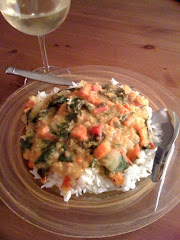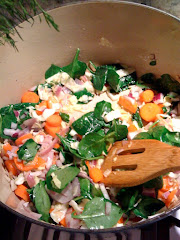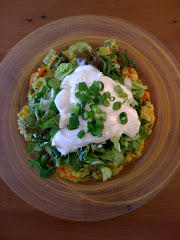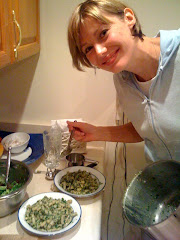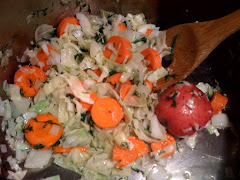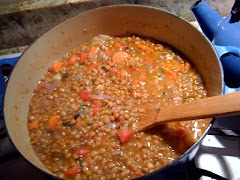Before I started studiing nutrition seriously, I began reading Bernard Jensen’s, Tissue Cleansing through Bowel Management. This remarkable book made me think differently about the disease process. Having been trained in conventional Western medicine as a nurse, I was taught to treat disease. More specifically, we have been taught to treat symptoms of disease. What I’ve learned from this book and other classes is that the root of many diseases actually comes from autointoxication. This is when toxins from food or environment are not eliminated from our bodies and in turn make us sick. Secondary to that, if the intestines are blocked or backing up, it makes absorption of vital nutrients more difficult. Blood to the colon begins to pick up toxins, or poisons from the bowel wall and deposit them back into the bloodstream. Constipation is the main culprit in autointoxication. Most people, including physicians think that if one stools once every one to two days, that this is sufficient. The fact is, that it is extremely important to eliminate after every meal one eats. It takes 18 hours from the time one eats a meal for it to go through the entire digestive process and be eliminated. Food or warm water in the stomach stimulates the bowel and assists in elimination. That’s why it is very important to drink warm lemon water upon waking in the morning, to stimulate undigested food in intestines and assist in elimination, before putting more food in the system. Another major problem with most people’s bowel is the lack of proper intestinal flora. Meat, coffee, sugar, alcohol, and many processed foods kill lactobacillus acidophilus (which need an acidic bowel) and feed bacillus coli (which love an alkaline bowel). In a normal healthy bowel, one should have 80% lactobacillus acidophilus and 20% bacillus coli. Most people on a western diet are the exact opposite, opening up a window for disease. In Bernard Jensen’s years of study, he found that people whose diets included fermented milk or yogurt (containing acidophilus), lived the longest. Having read this book, I did implement changes in my diet. Of course, every morning, I start off drinking luke warm purified water, at least one glass. A couple times per week my breakfast consists of a cup of Kefir (type of yogurt containing a higher protein, lower carbohydrate than regular yogurt). I sprinkle ¼ cup of ground flax seed on this drizzled with Agave nectar for sweetness. Alfalfa tablets may be taken after meals to provide natural fiber bulk. We should attempt to drink two liters of water everyday. For exercise, try to walk at least three times a week and the other days do stretches. Dr. Jensen is a firm believer in slant board exercises which get blood to your head and take some of the pressure off the bowel. When doing stretching, try poses which get the feet up in the air. Dr. Jensen’s book also discusses the benefits of colonics, fasting, juicing, broths, and enemas. Overall, it is important not to overlook our intestinal health.
Monday, December 1, 2008
Wednesday, October 29, 2008
Show Me The Food!
OK! You Keep Talking About Food. Bring it on!




People are always telling me that they couldn't possibly be a vegetarian because they would feel so weak and not have any energy. My feeling is that being a vegetarian for most people means taking the meat out of their cheeseburger at McDonald's and finishing off that bun with fries and a coke. So, sure. There is very little energy there except the short sugar high immediately afterwards. Most people are not sure how to start or what veggies to prepare. The concept of a meal with out the main dish being a meat is strange but with some education can be overcome. Learning how to balance your meals takes a little skill and some practice but can be seen as an exciting challenge.
My brother and I (and his beautiful wife) are always sharing recipes and especially photos of what exciting new dishes we have prepared. So, I was thinking about writing a cookbook with him. We both love nutritious whole food and taking pictures. Then I realized, that posting our photos and recipes here would be ideal. People are always asking me what I eat and how I cook it. So here it is. I will start by posting some of our beautiful dishes from the past year. We'll see how it goes. Enjoy...
The first photo is Greek Style Green Beans in a tomato, garlic,onion, and dill base.
The second photo is a pot of freshly picked pink eyed peas. I sauteed garlic, onion, and Swiss chard and then simmered the peas in that mixture.
The third photo is an creamy Italian mushroom risotto.
The next photo is a pot of yellow lentils not fully cooked.
Of course, the next picture is a Greek salad; cucumbers, tomatoes, and green onion drizzled with virgin olive oil but without the feta cheese!
The final photograph features rosemary hummus with rice crackers.





People are always telling me that they couldn't possibly be a vegetarian because they would feel so weak and not have any energy. My feeling is that being a vegetarian for most people means taking the meat out of their cheeseburger at McDonald's and finishing off that bun with fries and a coke. So, sure. There is very little energy there except the short sugar high immediately afterwards. Most people are not sure how to start or what veggies to prepare. The concept of a meal with out the main dish being a meat is strange but with some education can be overcome. Learning how to balance your meals takes a little skill and some practice but can be seen as an exciting challenge.
My brother and I (and his beautiful wife) are always sharing recipes and especially photos of what exciting new dishes we have prepared. So, I was thinking about writing a cookbook with him. We both love nutritious whole food and taking pictures. Then I realized, that posting our photos and recipes here would be ideal. People are always asking me what I eat and how I cook it. So here it is. I will start by posting some of our beautiful dishes from the past year. We'll see how it goes. Enjoy...
The first photo is Greek Style Green Beans in a tomato, garlic,onion, and dill base.
The second photo is a pot of freshly picked pink eyed peas. I sauteed garlic, onion, and Swiss chard and then simmered the peas in that mixture.
The third photo is an creamy Italian mushroom risotto.
The next photo is a pot of yellow lentils not fully cooked.
Of course, the next picture is a Greek salad; cucumbers, tomatoes, and green onion drizzled with virgin olive oil but without the feta cheese!
The final photograph features rosemary hummus with rice crackers.
Sunday, August 3, 2008
Bioflavanoids or Vitamin P
Researchers have reported thousands of Bioflavonoids. Also known as flavonoids, they are a class of plant secondary metabolites. They are the natural pigments in fruits and vegetables. Citrus bioflavonoids are found in citrus fruits such as Hesperidin,and Rutin(Quercetin). Anthocyanins are flavanoids that provide red and blue colors in flowers and fruit. Proanthocyanins such as Bilberry are found in tea, wine, bark, grape seed. Pycnogenol, an Isoflavone contain daidzein and genistein and are found in soy and clover.
What Do They Do?
Bioflavonoids enhance the action of Vitamin C and prolong its effectiveness. Vitamin C and bioflavonoids are found in many of the same foods and the body metabolizes both of these in the same manner. Many researchers have discovered that some of the functions that vitamin C is credited with are actually from bioflavonoids. Vitamin C and Bioflovonoids need each other to produce the effects they have on the immune system. Absorption may be slow, but small amounts can be stored in the body. In recent studies, Bioflavonoids have been shown to help maintain capillaries. Isoflavonoids have estrogenic properties and may benefit in menopause. They have an antibacterial effect, and act as natural antibiotics. Some can destroy certain bacteria in foods. They are indicated in the production of bile and may lower blood cholesterol levels and prevent heart disease. They are used in the prevention and treatment of cataracts Bioflavanoids are effectively used in the treatment of sports injuries for pain relief. They may lessen the symptoms of prolonged bleeding, lower serum calcium, and assist with quelling oral herpes exacerbations. They are known to assist in fighting allergies and asthma. Bioflavanoids may as well prevent cellular damage caused by free radicals. They are useful in enhancing the antioxidant action of certain nutrients. They may stop or slow the growth of malignant cells, and help protect against cancer causing substances from invading the heart and blood cells.
Where Are They Found?
Bioflavonoids are found in the white material just beneath the citrus peel! Here is a list of plants high in bioflavanoids : pine bark, garlic, broccoli ,berries, citrus fruit, peppers, onions, black currant, buckwheat, cantaloupe, grapes, green tea.
Deficiencies/Recommended Daily Allowance/Toxicity
If a diet contains enough fruits and vegetables, bioflavonoids should not be deficient. A deficiency would show up as bruising, vascular degeneration, capillary fragility, nosebleeds, periodontal bleeding, varicose veins, hemorrhoids, and aneurysm. No dosage has been determined but 500 mg per day is indicated for supplementation. Very high doses of bioflavonoids may cause diarrhea. Copper is the most common and potent inhibitor of hesperidin and Vitamin C. Molybdenum and sulfur support hesperidin uptake. Chromium inhibits Rutin. Vanadium and Selenium support Rutin uptake.
What Do They Do?
Bioflavonoids enhance the action of Vitamin C and prolong its effectiveness. Vitamin C and bioflavonoids are found in many of the same foods and the body metabolizes both of these in the same manner. Many researchers have discovered that some of the functions that vitamin C is credited with are actually from bioflavonoids. Vitamin C and Bioflovonoids need each other to produce the effects they have on the immune system. Absorption may be slow, but small amounts can be stored in the body. In recent studies, Bioflavonoids have been shown to help maintain capillaries. Isoflavonoids have estrogenic properties and may benefit in menopause. They have an antibacterial effect, and act as natural antibiotics. Some can destroy certain bacteria in foods. They are indicated in the production of bile and may lower blood cholesterol levels and prevent heart disease. They are used in the prevention and treatment of cataracts Bioflavanoids are effectively used in the treatment of sports injuries for pain relief. They may lessen the symptoms of prolonged bleeding, lower serum calcium, and assist with quelling oral herpes exacerbations. They are known to assist in fighting allergies and asthma. Bioflavanoids may as well prevent cellular damage caused by free radicals. They are useful in enhancing the antioxidant action of certain nutrients. They may stop or slow the growth of malignant cells, and help protect against cancer causing substances from invading the heart and blood cells.
Where Are They Found?
Bioflavonoids are found in the white material just beneath the citrus peel! Here is a list of plants high in bioflavanoids : pine bark, garlic, broccoli ,berries, citrus fruit, peppers, onions, black currant, buckwheat, cantaloupe, grapes, green tea.
Deficiencies/Recommended Daily Allowance/Toxicity
If a diet contains enough fruits and vegetables, bioflavonoids should not be deficient. A deficiency would show up as bruising, vascular degeneration, capillary fragility, nosebleeds, periodontal bleeding, varicose veins, hemorrhoids, and aneurysm. No dosage has been determined but 500 mg per day is indicated for supplementation. Very high doses of bioflavonoids may cause diarrhea. Copper is the most common and potent inhibitor of hesperidin and Vitamin C. Molybdenum and sulfur support hesperidin uptake. Chromium inhibits Rutin. Vanadium and Selenium support Rutin uptake.
Monday, July 21, 2008
Growing Herbs

Being Greek means that life generally revolves around food. As a child I remember my grandmother salting the fresh eggplant in the colander preparing it for the pastitsio. We watched and learned from a young age how to use fresh herbs like mint for the spanakopita or lentils; and oregano for just about everything. When visiting the island, Chios, where our family is from, we would go pick our own oregano as it grows wild as a weed in the mountains. The first time I ever saw an artichoke was on its stalk, deep purple and beautiful, in my grandfather’s garden. Really, there is nothing quite like a horiatiko (village) salad of ripe tomatoes, cucumbers, oregano, feta and olive oil. My mouth is watering just thinking about it. My memories are so vivid, colorful and tasty!Today I grow my herbs in pots outside my front porch. I grow oregano, lemon thyme, and sage. I also enjoy hearty lavender and in early spring usually grow dill as well. I cut fresh dill everyday that I can, into fresh greens. This is another traditional Greek salad. It is dressed with olive oil, lemon, and salt. You can add green onion to taste. This salad is so fresh with a distinctive taste, I often get complimented on it. I am so addicted to it that in the winter I cheat and use dried dill.I have three different kinds of basil; large leaf Sweet Italian, large leaf purple called Red Rubin Basil, and the small leaf Greek called Minette Basil. I tend to not allow them to flower as the leaves become bitter once it goes to seed. In winter I bring them inside to a sunny spot and keep them year-round. I trim the basil plants monthly in summer and enjoy a fresh pesto on those days. In the food processor or mini chopper, I put the leaves of all three types of basil (as many leaves as can fill the processor bowl), about a half cup of olive oil, ¼ cup freshly grated parmesan or piave cheese, 2-3 cloves garlic, and sometimes pine nuts, if I have them. You have to experiment with the amount of olive oil, because the pesto can be too dry if there’s not enough. The leaves tend to absorb it. It goes superbly on fresh, hard crusted semolina bread, although in our house we just eat it by the spoon.Interestingly enough, Greeks don’t eat basil the way Italians do. (I’m half Italian, by the way). Basil has theological significance to the Greek Orthodox Christians. Holy Tradition states that when St. Helen found the True Cross of Christ, she knew it because Sweet Basil was growing around it. On September 14th in Orthodox Churches around the world, old grandmothers (Yiayias) bring their basil to church to adorn the cross that the Priest will use in a procession with around the church. Then the Priest blesses everyone with the cross and with the basil. The women then take home the now blessed basil to make bread that will be used for Holy Communion. They mix salt, flour and water and make their dough. Then they make the sign of the cross with their blessed basil over the dough and miraculously, the dough rises without yeast! This is done every year all over Greece. As you can see, herbs are very important in the Greek culture. It really is a part of life. My house is not a home with out my potted herbs on my front porch.
Tuesday, July 1, 2008
Vitamin E and The Whole Wheat Berry

Until I read a lecture on Vitamin E, I only guessed that in general the American diet was lacking in this vital micro nutrient. Americans eat so much bread, pasta, pizza, and desserts, like cakes and cookies. We have a habit of eating cereal for breakfast, sandwiches for lunch, and pasta or pizza for dinner. Isn’t there Vitamin E in wheat? We learned that Vitamin E is contained in good quantity in wheat germ oil. Why not in wheat or wheat products? Unfortunately the wheat we eat is processed to remove the germ and the bran. Even organic whole wheat flour has no wheat germ. If it did it, it would be rancid within 24-72 hours without refrigeration. The fact is that to manufacture food for shelf life in the grocery store, the germ and the bran are removed from the wheat berry, leaving only the endosperm, which, by the way, contains the gluten. (Perhaps this contributes to gluten allergies.) The bran contains fiber, and the wheat germ contains 26 different vitamins and fatty acids. To obtain all the nutrients from the wheat berry, one must consume the entire berry, otherwise known as “whole wheat”. When the wheat berry is processed to removed the germ and the bran, 86% of the Vitamin E is lost, as well as a host of other nutrients. All we get from store bought wheat products are empty calories!So, can I venture to say that Americans are deficient in Vitamin E? We tend to be overfed yet undernourished. It seems difficult to obtain sufficient quantities of Vitamin E in an American diet unless actively pursuing it. Interestingly, Vitamin E deficiencies are linked to reproductive organ dysfunction, miscarriages, and deficient lactation. (This may be an exaggeration, but I rarely meet women who haven't miscarried.) Coupled with the fact that synthetic estrogen, and inorganic iron found in pre-natal vitamins destroy Vitamin E in the body, it seems even more difficult not to be Vitamin E deprived. For instance if the RDA for a woman over the age of 19 is 15 mg per day, and green beans, tomatoes, and eggs have less than 1mg each; it seems like a weighty task to consume the optimal levels on the typical western diet. Yet if we ground our own wheat berries and made fresh bread with the whole berry, including the germ and the bran, we would be getting sufficient amounts of Vitamin E as well as an array of other nutrients.It seems that because much of our food is processed, and refined to sit on grocery store shelves, we may be losing vital nutrients that we would normally consume if our food were fresher and in its most natural state. Even eating fresh produce may prevent proper nutrient absorption if the produce has been treated with insecticides, pesticides, and chemical fertilizers. Vitamin deficiencies are so common in the United States because of the overall poor quality of food being consumed, pharmaceutical drug ingestion which inhibits absorption of many nutrients, and even poor quality of soils. For instance, “you could buy spinach in 1948 that contained 158 milligrams of iron. Today, the iron content of raw spinach is 27 milligrams.” (Medford, 2006).The human body is resilient and adaptable. We are survivors. Look at Eskimos who hardly eat any vegetables at all. They survive on fish and even seaweed, (mainly unprocessed foods); surviving in their environment. Likewise, here in America we seem to be surviving. Yet, each day, the older we get, we accept aches, pains, and ailments as a part of life; instead of listening to our bodies. It’s amazing how we survive on burgers and fries! So many women in there 30’s and 40’s are exhausted, having trouble even getting out of bed, as if they were in their 70’s! I believe our bodies are begging for proper nutrition. Perhaps we should be looking more carefully at what we put in our mouths, questioning the nutritional value of our food. I’m the first to admit, it is quite the task to be nutrient savvy especially when there’s coffee and Krispy Kreme to be had! Our health is precious and so our diet has to be carefully chosen with optimal nutrition in mind.
Whole Foods vs. Isolated Nutrients

Given that today’s American diet is linked to unprecedented amounts of disease and illness, one must consider what people were eating 100 years ago. Life had its hardships yet seemed simpler. People tended to live in the place where they were born, growing their own foods, taking care of their families. A hundred years ago, heart attacks were practically unheard of in the United States. People ate less than 12 pounds of sugar per year. Since they ate what was available and in season, there were no preservatives or additives. For instance, traveling to the next town which may have been a mere 10 miles away, was a major event. Without modern conveniences people were forced to rely on the earth for sustenance, and in turn the earth provided what was necessary while still being able to rejuvenate itself. With the advent of technology and the need to keep up with a faster paced lifestyle, our diets have changed. Our agricultural methods have changed. And, our earth has changed. Today Americans eat more than 200 pounds of sugar, per person, per year, mainly in the form of refined, processed foods. One only has to venture into any public school on any given day to see what American children are eating: processed, refined, genetically modified, nutrient deprived food. People have known for centuries the importance of fresh, unrefined foods for health and well being, even using it as medicine for the sick. Around 400 BC Hippocrates, the Father of Modern Medicine taught his students, “Let thy food be thy medicine and let thy medicine be thy food. Each of the substances of a persons diet acts upon his body and changes it in some way, and upon these changes his whole life depends.” All too often we deny the truth of these words and suffer the consequences. In 1700’s British sailors were suffering from scurvy, vitamin C deficiency, due to long months out at sea away from fresh food. In 1747, Dr. James Lind conducted the first double blind controlled study with his goal to prevent scurvy. Ships at that time only carried preserved foods, nothing fresh. Dr. Lind called for sailors to take 3 spoonfuls of fresh lime juice on a daily basis. Scurvy was soon eradicated and British sailors became known as Limeys! Interestingly enough, three spoonfuls of lime juice has about 10mg of vitamin C. Does that mean we only need 10 mg/day? Yet the RDA is 60mg vitamin C/day. So, is it isolated supplements of vitamins that we need to prevent disease, or rather whole foods? Dr. Szent Gyourgi, Nobel Prize winner for discovering ascorbic acid, realized that food compounds are locked behind cell walls in whole foods. When the compounds or vitamins are extracted and isolated, they do not perform the same tasks. In the 1920’s, Dr. Gyourgi administered ascorbic acid to his patients, believing that he isolated the component responsible for preventing scurvy. In his clinical trials the ascorbic acid failed. He became convinced that ascorbic acid within the food form is superior to ascorbic acid alone. In 1932, when he was giving his acceptance speech for receiving the Nobel Prize for his discovery of ascorbic acid, he questioned why he won since the ascorbic acid alone did not cure scurvy. He urged the scientific community to focus research on whole food compounds rather than isolating components of food. After decades of isolating vitamins and minerals and prescribing their use for well being, current research goes back to the work of Dr. Gyourgi. At the National Institutes of Health it has been found that isolated dosages of synthetic vitamins did nothing to ward off cancer. Dr. Adriane Fugh-Berman states, “Supplementing with isolated nutrients instead of a natural mix of food components was not the most productive approach.” The Mayo Clinic web site states that whole foods contain hundreds to thousands of other food components that are important for good health. Most of these components are unidentified! Also, it can be seen that cultures with diets of unprocessed and unrefined foods have the least amounts of diseases, while cultures with primarily processed and refined foods produce people with disease. It is evident, based on history, that whole foods are the most beneficial for sustaining life. This means foods that are fresh; grown in clean, mineral rich soil, are ones that produce the most beneficial, medicinal nutrition for life.
Sunday, June 29, 2008
Digestive Health and Triphala
Today I want to discuss a very important Ayurvedic herb. Ayurveda is Ancient Indian Medicine and has been used for over 2000 years. Many of the spices and herbs used in Indian cooking are well known to us here in the west but what we may not know is that Indians have significantly less cancer than Westerners. For instance, MD Anderson Cancer Hospital (where I worked prior to coming to Columbia) has done studies with Tumeric and its anti-cancer benefits. In fact MD Anderson has even opened a Division of Integrated Medicine to study the effects of alternative practices and healing cancer.
Digestive health is imperative to overall health and well-being. I have a firm belief that if we are not eliminating properly, the toxins in our digestive tract are re-absorbed back into the body causing sickness and disease. There is much to discuss about the digestive tract and I plan to devote a post entirely to this at a later date. I want to introduce you to Triphala because I believe the sooner you start taking this herb the sooner you will feel its extraordinary benefits.
Triphala literally means three fruits. It is an herbal combination of three very strong anti-oxidants: Haritaki, Amalaki and Bibhitaki. People in India take Triphala for a variety of benefits but most commonly, it is used for constipation. There is a saying in India, "If you don't have your mother, at least you have Triphala!"
For most people Triphala is a mild laxative. It is excellent for clearing toxins from the digestive system. In very rare cases it has a stronger laxative effect, but usually it is an ideal bowel cleanser especially because it is mild. In moderate doses it is gentle, and detoxifies the body slowly. Because it is slow, you can take Triphala for longer periods of time which then lends itself to a deeply purifying effect. It works at the cellular level to release toxins. It detoxifies the blood, muscle and fat tissues, and so, it is excellent for preventing skin disease. It is as well known for balancing cholesterol levels appropriately.
Below are listed some of the benefits of Triphala:
-Triphala corrects constipation, and cleanses and tones the gastro-intestinal tract.
-It detoxifies the whole body and improves digestion.
-Triphala reduces high blood pressure and hypertension; and improves blood circulation.
-It is anti-viral, anti-bacterial, a powerful anti-oxidant, and has anticancer, and anti-allergy properties
-Triphala is also helpful in liver disorders, acting as an expectorant.
- It corrects Diverticulitis (diverticulosis).
-It is very effective in Irritable Bowel Syndrome and Ulcerative Colitis.
-Triphala is a powerful eye rejuvenator for treatment of conjunctivitis, progressive myopia, the early stages of glaucoma and cataracts.
-It is highly anti-inflammatory, anti-viral while stimulating bile-flow and peristalsis.
You can find Triphala at most health food/supplement stores. Read the instructions. Usually, it comes in pills of about 500-750mg per tablet. I recommend taking 2 tablets in the morning and two at night. Take at least one hour before or after meals, not directly with a meal. Also, you may experience intestinal gurgling. This is normal. At first, you may have a loose stool. Bear with this loose stool for a while and wait for your body to adjust to the herb. After about a month you may want to take one pill in the morning and one in the evening. Give it time and see what works best for you. Be patient and remember its amazing detoxifying benefits. It's good for you!
Let me know what you think. If you have any questions, feel free to ask in the comment section. Take care and don't forget to eat your plants.
Digestive health is imperative to overall health and well-being. I have a firm belief that if we are not eliminating properly, the toxins in our digestive tract are re-absorbed back into the body causing sickness and disease. There is much to discuss about the digestive tract and I plan to devote a post entirely to this at a later date. I want to introduce you to Triphala because I believe the sooner you start taking this herb the sooner you will feel its extraordinary benefits.
Triphala literally means three fruits. It is an herbal combination of three very strong anti-oxidants: Haritaki, Amalaki and Bibhitaki. People in India take Triphala for a variety of benefits but most commonly, it is used for constipation. There is a saying in India, "If you don't have your mother, at least you have Triphala!"
For most people Triphala is a mild laxative. It is excellent for clearing toxins from the digestive system. In very rare cases it has a stronger laxative effect, but usually it is an ideal bowel cleanser especially because it is mild. In moderate doses it is gentle, and detoxifies the body slowly. Because it is slow, you can take Triphala for longer periods of time which then lends itself to a deeply purifying effect. It works at the cellular level to release toxins. It detoxifies the blood, muscle and fat tissues, and so, it is excellent for preventing skin disease. It is as well known for balancing cholesterol levels appropriately.
Below are listed some of the benefits of Triphala:
-Triphala corrects constipation, and cleanses and tones the gastro-intestinal tract.
-It detoxifies the whole body and improves digestion.
-Triphala reduces high blood pressure and hypertension; and improves blood circulation.
-It is anti-viral, anti-bacterial, a powerful anti-oxidant, and has anticancer, and anti-allergy properties
-Triphala is also helpful in liver disorders, acting as an expectorant.
- It corrects Diverticulitis (diverticulosis).
-It is very effective in Irritable Bowel Syndrome and Ulcerative Colitis.
-Triphala is a powerful eye rejuvenator for treatment of conjunctivitis, progressive myopia, the early stages of glaucoma and cataracts.
-It is highly anti-inflammatory, anti-viral while stimulating bile-flow and peristalsis.
You can find Triphala at most health food/supplement stores. Read the instructions. Usually, it comes in pills of about 500-750mg per tablet. I recommend taking 2 tablets in the morning and two at night. Take at least one hour before or after meals, not directly with a meal. Also, you may experience intestinal gurgling. This is normal. At first, you may have a loose stool. Bear with this loose stool for a while and wait for your body to adjust to the herb. After about a month you may want to take one pill in the morning and one in the evening. Give it time and see what works best for you. Be patient and remember its amazing detoxifying benefits. It's good for you!
Let me know what you think. If you have any questions, feel free to ask in the comment section. Take care and don't forget to eat your plants.
Thursday, June 26, 2008
Plants For Food

I am hoping to create a forum for those of us who believe that eating a wide variety of plant based foods is vital for good health; a place where we can share ideas and knowledge about diet, nutrition, and holistic health practices.
I believe in the body's ability to heal itself through nutrition using whole plant based foods and herbs.
As a medical professional, I have learned that disease is best tackled by prevention; and prevention is obtained by education. I believe in a person's ability to make the right choices for oneself if given all the facts; not just what big industries want to sell.
Diseases like Diabetes, Cancer, and Heart Disease, are "Diseases of Wealth". What are we eating? Why are we sick? All too often I have taken care of sick, hospitalized children whose diets are filled with fat, sugar and animal protein. Most people don't eat vegetables, whole grains, or even legumes. It is no secret that the Western diet is unhealthy. Look at other cultures that do not have these diseases. What are they eating? I believe a healthy plant-based diet is the best medicine.
Join me on this journey towards better health and better quality of life, where we can share our knowledge about eating plants for food!
I believe in the body's ability to heal itself through nutrition using whole plant based foods and herbs.
As a medical professional, I have learned that disease is best tackled by prevention; and prevention is obtained by education. I believe in a person's ability to make the right choices for oneself if given all the facts; not just what big industries want to sell.
Diseases like Diabetes, Cancer, and Heart Disease, are "Diseases of Wealth". What are we eating? Why are we sick? All too often I have taken care of sick, hospitalized children whose diets are filled with fat, sugar and animal protein. Most people don't eat vegetables, whole grains, or even legumes. It is no secret that the Western diet is unhealthy. Look at other cultures that do not have these diseases. What are they eating? I believe a healthy plant-based diet is the best medicine.
Join me on this journey towards better health and better quality of life, where we can share our knowledge about eating plants for food!
Subscribe to:
Posts (Atom)
